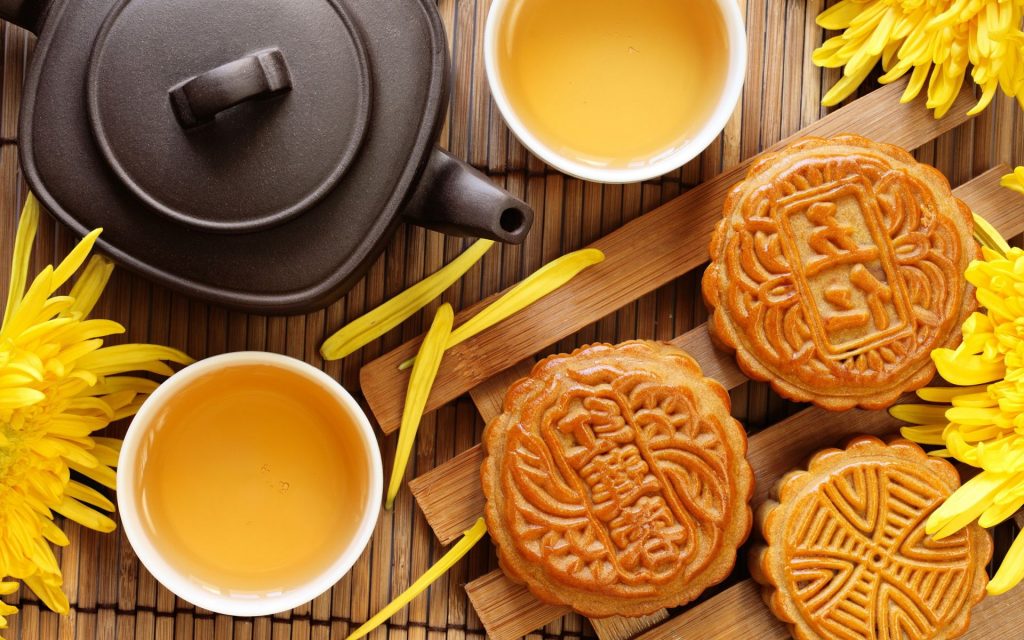Mid-Autumn Festival celebration falls around September and October, on the 15th day of the 8th month of the Chinese lunar calendar. This year in 2017 it takes place on the 4th of October.
It is definitely a great holiday to celebrate with the whole family and loved ones, but let’s be honest here. If anyone were to ask your favourite part of the festival, it’s your tummy that would eagerly answer. They are more than excited to indulging the mooncakes – from traditional to contemporary ones. Or at the very least my tummy is.
The Mid-Autumn festival, or also known as “Zhongqiu Jie” traditionally marks the end of the autumn harvest which can be traced back as far as the Zhou Dynasty, the longest Chinese dynasty that reigned in the year of 1046 to 256 B.C. The festival is a time to give thanks to the lunar deity, Chang’Er, the moon goddess of immortality. An ancient belief says that the selfless woman drank the elixir of immortality to save herself from a courtier.

She immediately began to float off the ground. Instead of floating all the way to heaven, she decided to land on the moon to stay close to her husband whom she dearly loved. Since then on, people gaze with appreciation to the brightly lit full moon and lit lanterns in her honour for her to see in the beautiful night sky.
We have been talking about the moon until now but not the mooncakes. The question now is how did the Chinese end up celebrating the festival by giving out and eating mooncakes? Well, legend has different stories on the origin of the custom.

Firstly, it was not until the Tang dynasty which reigned on the 619 A.D that the mooncake tradition was implemented. According to the Chinese folklore, a Turpan businessman gifted mooncakes to Emperor Taizong after his victory on the fifteenth day of the eighth lunar month against the Xiongnu, the nomadic people of ancient central Asia.
Emperor Taizong looked at the moon while eating the mooncake and said, “I’d like to invite the toad to enjoy the cake.” He then shared the cake with his ministers and the practice began to spread throughout the nation. The round cakes eventually became known as the mooncakes, and the rest is history.
The story did not end there though. Grab yourself a cup of tea as you read another story, as it’s just as interesting. According to a different tale, the traditional mooncakes played a very significant role in helping the Chinese rebellion gain freedom from the Mongol rule at the end of the Yuan Dynasty.
Rebel leader Zhu Yuan Zhang distributed thousands of mooncakes to the Chinese residents in Mongol capital to celebrate the Mongol ruler. Little did they know, the baked treats concealed a hidden message inside. The message said, “Kill the Mongols on the 15th day of the 8th month.” The plan was a successful uprising, overthrowing the Mongols.

Today, we celebrate Mid-Autumn Festival by giving family, friends and colleagues mooncakes. The small but filling pastry embosses various flavours and designs depicting the legends of the moon. The mooncakes which symbolise unity, are traditionally filled with lotus seed paste or red beans together with salted yolk. It has an appeal of a peculiar flavour of its own, blending the sweetness and saltiness together.
On today’s spectrum, mooncakes have evolved from traditional flavors to a new, innovative character. Westerns put their own little twist by incorporating western ingredients into Chinese tastes. Their mooncake can contain chocolate, truffles and even alcoholic beverages like champagne. Asian continents love and enjoy infusing local ingredients such as durian, tapioca and pandan fillings to their mooncakes. We can completely understand why!
Regardless of its origins, the mooncake is a delicious way to celebrate the festival. Throw yourself your own mini Mid-Autumn festival celebration and pick up a mooncake or perhaps, even make one! When the sun comes down, look at the full moon and see if you can spot the goddess of immortality. I will be more than happy to share my snow skin mooncakes and celebrate the festive day with you.
